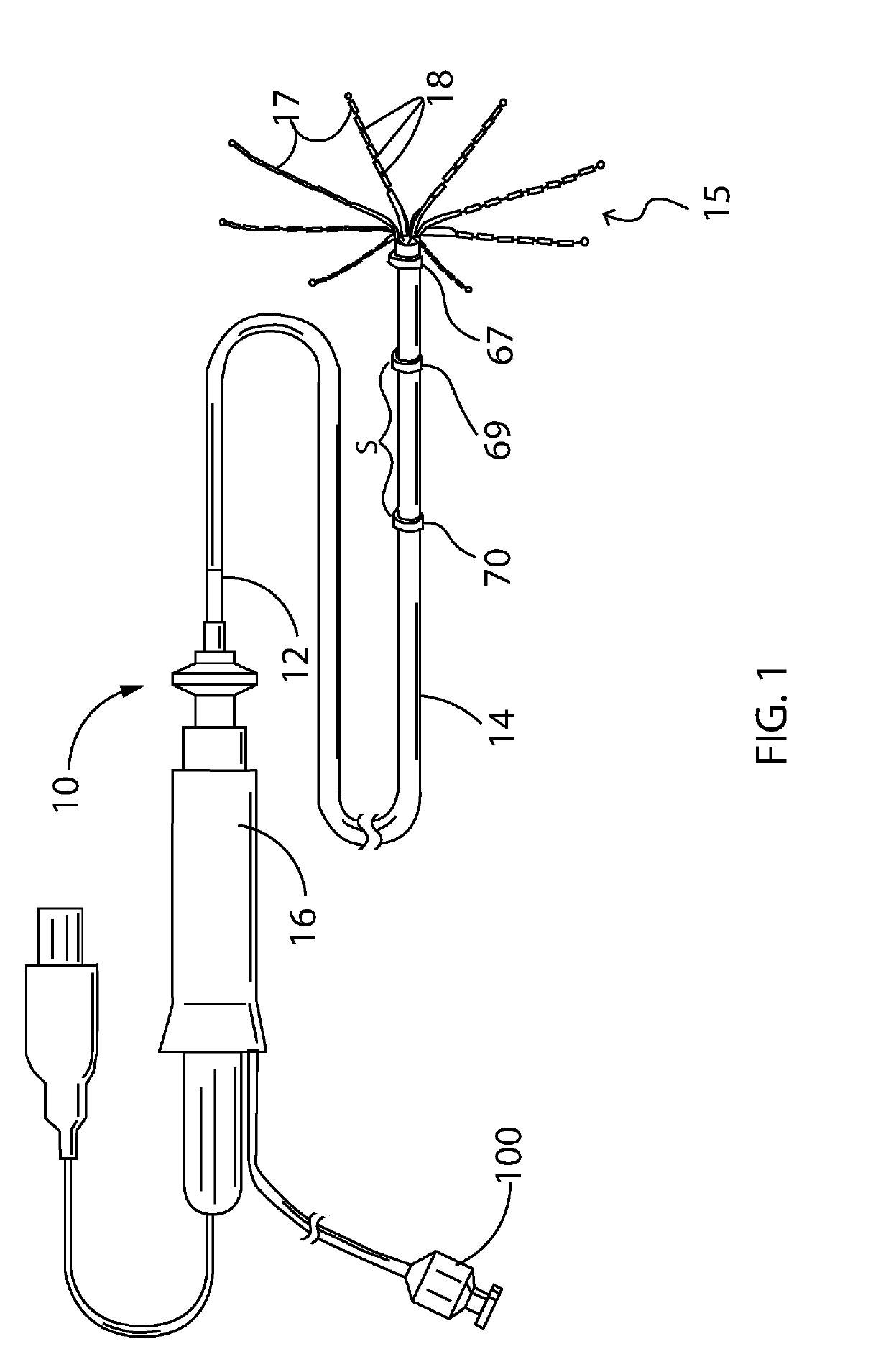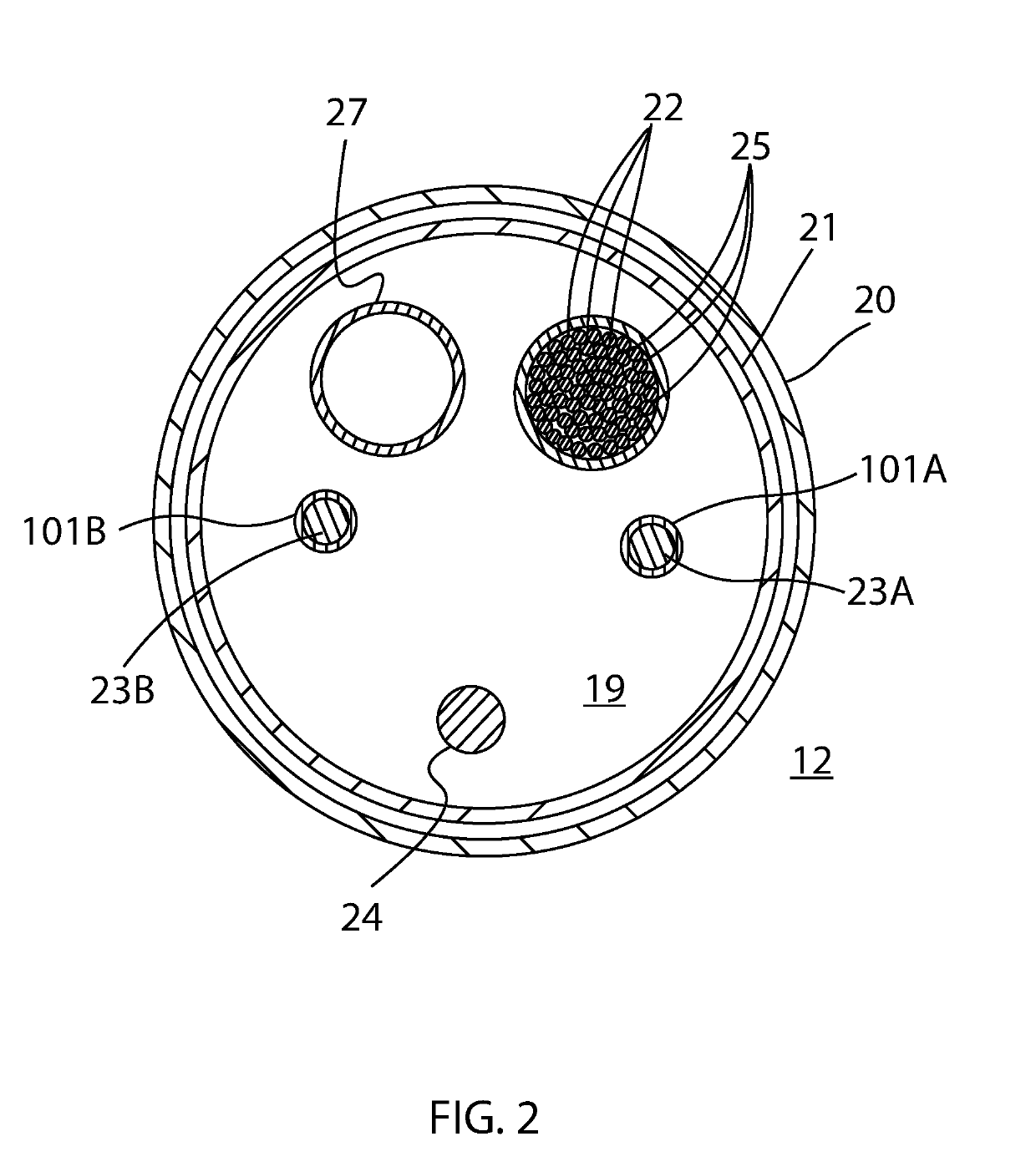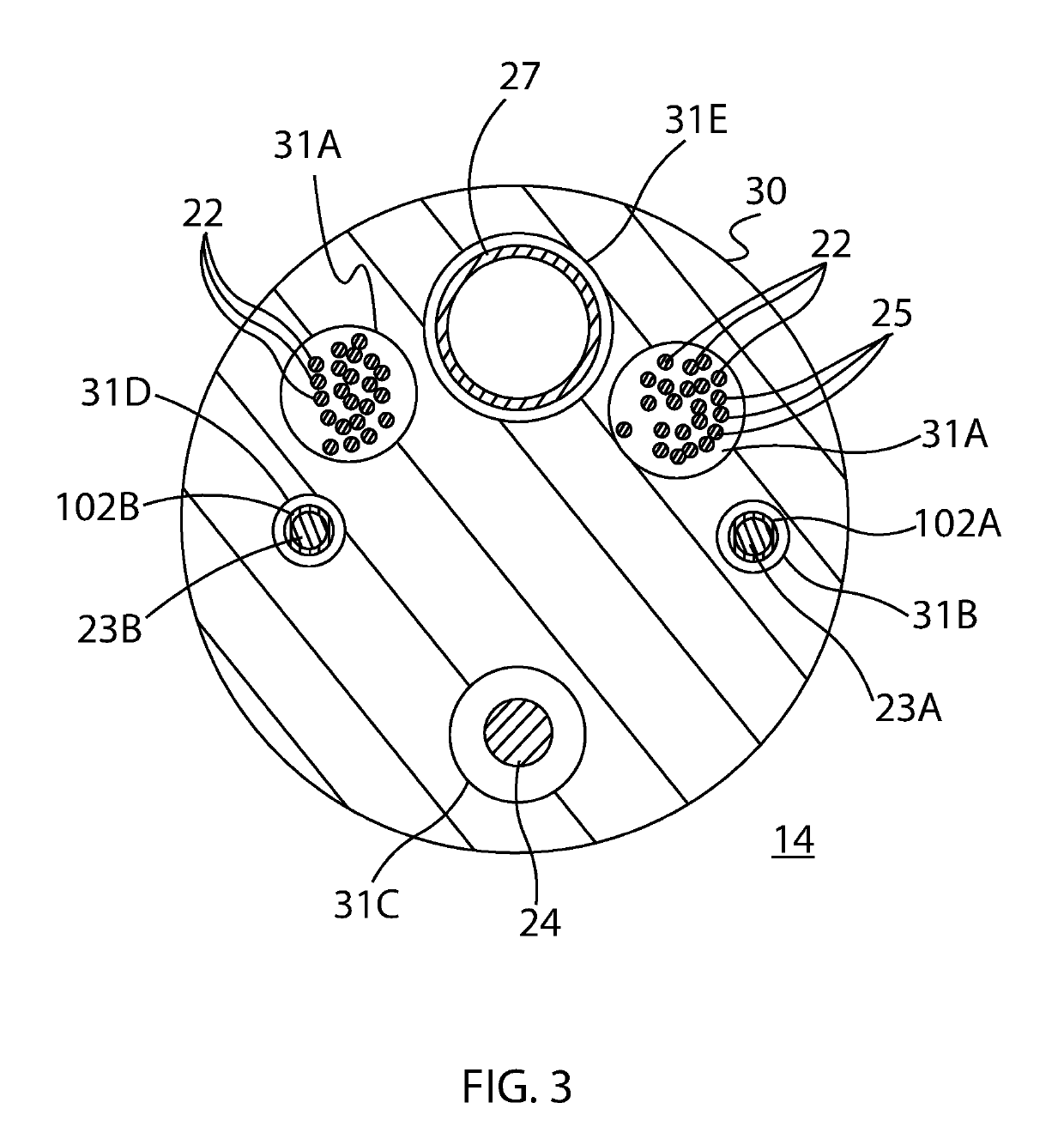Catheter with staggered electrodes spine assembly
a catheter and spine technology, applied in the field of electrophysiology catheters, can solve the problems of increased risk of electrode touching and shortening, difficulty in determining, and increased risk of deformation, so as to facilitate tissue contact, improve flexibility and rigidity, and minimize the detection of undesirable nois
- Summary
- Abstract
- Description
- Claims
- Application Information
AI Technical Summary
Benefits of technology
Problems solved by technology
Method used
Image
Examples
Embodiment Construction
[0096]Referring to FIG. 1, in some embodiments of present invention, a catheter 10 includes a catheter body 12, an intermediate deflection section 14, a distal electrode assembly 15, and a control handle 16 proximal of the catheter body 12. The distal electrode assembly 15 includes a plurality of spines 17, with each spine supporting a plurality of microelectrodes 18.
[0097]In some embodiments, the catheter body 12 comprises an elongated tubular construction, having a single, axial or central lumen 19, as shown in FIG. 2. The catheter body 12 is flexible, i.e., bendable, but substantially non-compressible along its length. The catheter body 12 can be of any suitable construction and made of any suitable material. A presently preferred construction comprises an outer wall 20 made of a polyurethane, or PEBAX. The outer wall 20 comprises an imbedded braided mesh of high-strength steel, stainless steel or the like to increase torsional stiffness of the catheter body 12 so that, when the ...
PUM
 Login to View More
Login to View More Abstract
Description
Claims
Application Information
 Login to View More
Login to View More - R&D
- Intellectual Property
- Life Sciences
- Materials
- Tech Scout
- Unparalleled Data Quality
- Higher Quality Content
- 60% Fewer Hallucinations
Browse by: Latest US Patents, China's latest patents, Technical Efficacy Thesaurus, Application Domain, Technology Topic, Popular Technical Reports.
© 2025 PatSnap. All rights reserved.Legal|Privacy policy|Modern Slavery Act Transparency Statement|Sitemap|About US| Contact US: help@patsnap.com



